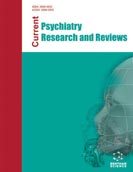
Abstract
Background: Stressors have a huge impact on one’s well-being. They affect individual’s mental and physical health, if untreated. The response to these stresses is termed as a stress response. Based on the type and severity of the stimulus, stress can affect the various actions and functioning of the body. This explains how important it becomes to detect the level of stress and treat it well. The best treatment for stress is to identify the factors causing stress and eliminate them in the initial stage. Various methods have been proposed to detect the level of stress. One of the common methods is by using wearable devices to capture EEG signals and use various proposed algorithms to detect the level of stress. However, there are cases where stress cannot be captured by non-invasive technologies. Besides, these technologies cannot determine the stress-causing factors. This paper proposes a methodology to cater to such cases and identify the factors causing stress in the patient. It can also act as a front line methodology to detect if the candidate is suffering from anxiety or stress. The use of fuzzy logic in various healthcare areas has become very evident. This is because it deals with a range of values. While, Petri nets is a network where the arc runs from place to transition and not between places and transitions. It is the best model to use in dynamic and concurrent activities of the system. Thus, a combination of these two logics can provide an extremely competent basis for the implementation of computing reasoning processes and the modeling of systems with uncertainty. Thus, Fuzzy Petri Nets (FPN) have been proposed. This paper proposes the use of FPN in designing a methodology for factors responsible for causing stress and advancing the level of stress in the patient. The methodology is developed by observing the process of food transfer in plants. The authors have also discussed afferent and efferent stress paths.
Methods: The methodology proposed in this paper uses Fuzzy Petri Net. The algorithm designed in this paper has been named as the Sprouting tree algorithm by the authors. Designing the fault tree is the first and very important step for the correct determination of the level of the stress. The score generated using the Hamilton scale is fed as input to the AND/OR gate system to receive the value of stressor, and thus, drawing a fault tree. The transformation rules are applied to convert the fault tree into the FPN. Then, we derive production rules and reachability matrix. These rules help in normalizing the value obtained via fault tree so that they lie in the range of fuzzy logic. FPN calculates the certainty factor (CF), which represents the state of stress in an individual. Therefore, the values obtained from FPN will finally build a tree, which is named as Sprouting tree.
Conclusion: The methodology proposed in this paper is absolutely new to detecting the stress. The future of this work is to observe the accuracy of the proposed algorithm by implementing it with real data, which is under process.
Keywords: Sprouting algorithm, fuzzy logic, petri net, reachability, stress rating scale, stress detection.
Graphical Abstract
[http://dx.doi.org/10.1371/journal.pone.0217913] [PMID: 31518347]
[http://dx.doi.org/10.3390/pr6080097]
[http://dx.doi.org/10.1016/j.engappai.2017.01.012]
[http://dx.doi.org/10.1109/ACCESS.2018.2878145]
[http://dx.doi.org/10.1093/bib/bby118]
[http://dx.doi.org/10.1007/s11633-010-0521-9]
[http://dx.doi.org/10.5220/0005841700050013]
[http://dx.doi.org/10.1145/3422822]
[http://dx.doi.org/10.1136/jnnp.23.1.56.]
[http://dx.doi.org/10.1155/2020/8860841] [PMID: 32802030]
[http://dx.doi.org/10.3233/IDT-200047]
[http://dx.doi.org/10.1001/archpsyc.1988.01800320058007] [PMID: 3395203]
[http://dx.doi.org/10.1109/ICoBE.2012.6179059]
[http://dx.doi.org/10.1109/ITCS.2010.21]
[http://dx.doi.org/10.1161/HYPERTENSIONAHA.109.143164] [PMID: 19948985]
[http://dx.doi.org/10.1161/HYPERTENSIONAHA.108.111625] [PMID: 18574074]
[http://dx.doi.org/10.1002/da.22610] [PMID: 28221710]
[http://dx.doi.org/10.1371/journal.pone.0095215] [PMID: 24736740]
[http://dx.doi.org/10.1109/TAC.2017.2742659]
[http://dx.doi.org/10.1038/s41598-020-62525-7] [PMID: 32221336]
[http://dx.doi.org/10.1103/PhysRevE.97.052405] [PMID: 29906840]
[http://dx.doi.org/10.1371/journal.pcbi.1006403] [PMID: 30307937]
[http://dx.doi.org/10.1201/9780203713402-11]
[http://dx.doi.org/10.1016/j.eswa.2016.11.017]
[http://dx.doi.org/10.1007/s12065-019-00327-1]
[http://dx.doi.org/10.3390/s110303381] [PMID: 22163802]
[http://dx.doi.org/10.1016/j.ijpsycho.2018.07.476] [PMID: 30081067]
[http://dx.doi.org/10.1016/j.cmpb.2012.07.003] [PMID: 22921417]











